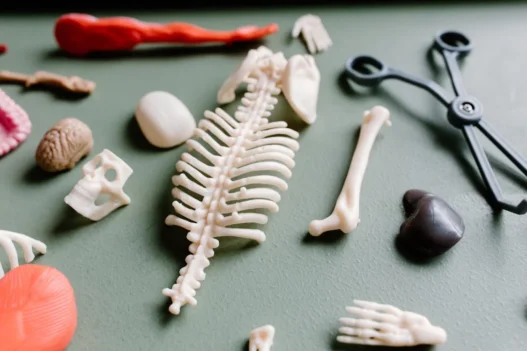0SSN44Z is a procedure used to reposition the joint between the bone in the foot and the bone in the big toe, utilizing an internal fixation device. This process is performed using a minimally invasive endoscopic approach.
Table of Contents:
- 🔎 Clinical Indication
- 📋 Preparation
- 📖 Methodology
- 🩹 Recovery
- 🚨 Complexity & Risk
- 🔀 Similar Procedures
🔎 Clinical Indication
Reposition Left Metatarsal-Phalangeal Joint with Internal Fixation Device may be performed when there is a dislocation or subluxation of the joint, often due to trauma or structural issues within the foot.
The procedure is typically done through a minimally invasive percutaneous endoscopic approach, allowing for precise manipulation and fixation of the bones without the need for large incisions.
By repositioning and stabilizing the joint with an internal fixation device, surgeons can restore proper alignment and function to the foot, reducing pain and improving overall mobility for the patient.
📋 Preparation
Before undergoing the procedure for repositioning the left metatarsal-phalangeal joint with an internal fixation device using a percutaneous endoscopic approach, the patient will typically meet with their healthcare provider to discuss the procedure and its potential risks and benefits.
The patient may need to undergo medical tests such as blood work or imaging studies to ensure they are healthy enough for the procedure and to assist the surgeon in planning the surgery.
In some cases, the patient may be instructed to stop taking certain medications before the procedure to reduce the risk of complications during and after the surgery. It is important for the patient to follow all pre-operative instructions provided by their healthcare team.
📖 Methodology
During 0SSN44Z, a reposition left metatarsal-phalangeal joint with internal fixation device is performed using a minimally invasive percutaneous endoscopic approach. This means that the joint is realigned and stabilized using a small camera and specialized tools inserted through small incisions. The internal fixation device helps to keep the bones in the correct position during the healing process.
This procedure is often recommended for patients with severe arthritis, deformities, or injuries in the metatarsal-phalangeal joint of the foot. By repositioning the joint and fixing it in place, patients can experience improved stability, reduced pain, and better function in their foot. Recovery time is typically quicker with this minimally invasive approach compared to traditional open surgery.
🩹 Recovery
After undergoing a reposition of the left metatarsal-phalangeal joint with an internal fixation device through a percutaneous endoscopic approach, recovery typically involves rest and elevation of the foot to reduce swelling. Physical therapy may be recommended to regain strength and mobility in the affected area.
Patients should expect to follow a prescribed rehabilitation program to gradually increase weight-bearing activities and prevent stiffness in the joint. It is important to attend follow-up appointments with the healthcare provider to monitor progress and address any concerns that may arise during the recovery process.
Overall, recovery after a reposition of the left metatarsal-phalangeal joint with internal fixation device can vary depending on the individual’s health and adherence to the recommended treatment plan. Patience and commitment to the recovery process are crucial for achieving the best possible outcome.
🚨 Complexity & Risk
Performing 0SSN44Z, also known as Reposition Left Metatarsal-Phalangeal Joint with Internal Fixation Device using a Percutaneous Endoscopic Approach, is a complex surgical procedure. It involves realigning the joint between the metatarsal and phalangeal bones in the foot using an internal fixation device, which requires precision and skill.
The potential risks for patients undergoing this procedure include infection, nerve damage, and improper alignment of the bones post-surgery. Patients may also experience pain, swelling, and limited range of motion in the affected foot. It is crucial for surgeons to carefully assess the risks and benefits of 0SSN44Z before recommending the procedure to patients.
🔀 Similar Procedures
Another medical procedure similar to Reposition Left Metatarsal-Phalangeal Joint with Internal Fixation Device is known as arthroscopic surgery. This procedure involves using a small camera to see inside the joint and making repairs with miniaturized instruments. Both procedures are minimally invasive and allow for quicker recovery times compared to traditional open surgeries.

